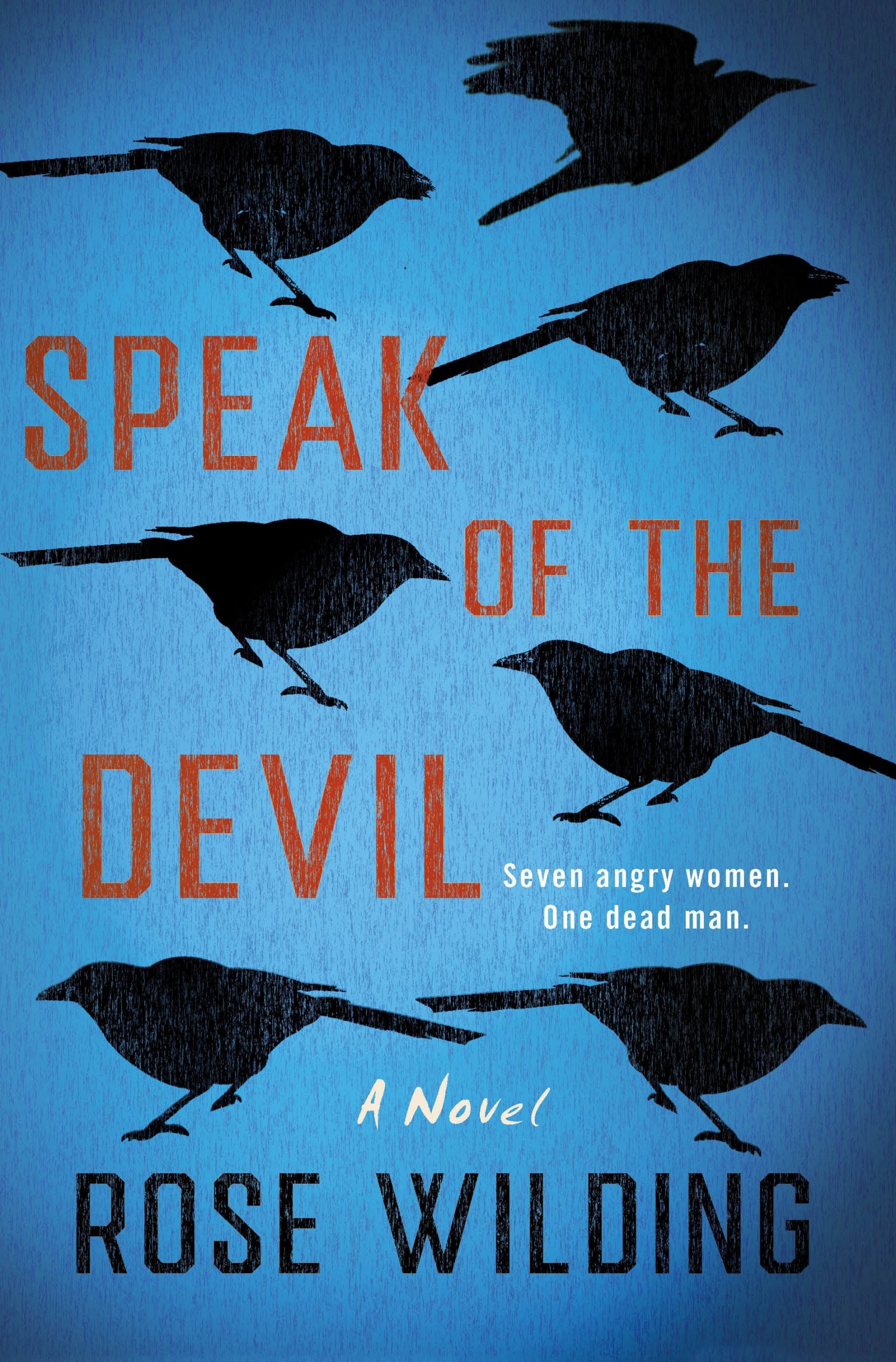We’ve all experienced stories about women who’ve been scorned, be they books, movies, video games, TV shows or what have you. It’s an age old trope, and something that is sometimes very poignant, especially in today’s post-Me Too culture. It’s also something that will likely never disappear from popular culture or fiction in general.
Speak of the Devil by Rose Wilding is one such tale, in which seven scorned women come together to discuss and disparage one man who negatively affected all of their lives. It’s a story of how one awful, abusive, mean spirited and selfish person can impact many others, and it doesn’t end well for Jamie Spellman. In fact, the book begins as the seven women congregate inside of an old hotel suite turned storage room, and soon discover that Jamie’s head is sitting on a stack of Bibles in the middle of their circle. He’s dead, and not only that; he’s been beheaded, too. The question is: Who did it?
Unlike other thrillers, this particular novel doesn’t become a murder mystery from the start, and doesn’t take the form of a typical one. In fact, the majority of its pages are devoted to the women in question and their dealings with Jamie. Interwoven within is the plight of a female detective, who’s trying to solve the case while also having romantic feelings for one of the seven.

There’s Maureen, who raised Jamie until he was fifteen because her sister passed away while delivering him. However, the two never had a close bond and Maureen always kind of hated the boy. Then, there’s Sarah, a bisexual alcoholic whose life was greatly affected by her meeting Jamie and getting into an abusive relationship with him. They’re joined by Kaysha (who Jamie preyed upon) and several other women whose lives would’ve been a lot better if they’d never met Mr. Spellman or been enchanted by his good looks and manipulative personality.
As such, Speak of the Devil is part women’s fiction and part mystery of sorts. By reading it, we learn information about these ladies and their reasons for detesting Jamie and perhaps even wanting him dead. However, I didn’t feel like it was as cohesive a reading-driven investigation as it could’ve been, and found things muddy. Simply put there are too many cooks in the kitchen here, meaning too many vantage points and too many individual stories. While I like the premise and enjoyed parts of the book, it was hard to keep track of everything because there were several different womens’ stories to read and all of their ‘voices’ sounded the same.

As expected, there were characters who I preferred reading about and others that I wasn’t too keen on learning more about. It was also occasionally difficult to parse what was being said, because Speak of the Devil is filled with lots of — what I thought was — Scottish slang. I was wrong, though, because while the author never seems to state which city everything takes place in, a lot of it does occur around the Tyne Bridge, which is apparently in a part of England. I never would’ve guessed, though, because the incredibly strong, common and (only occasionally) hard to parse slang seemed so Scottish.
I never did truly connect with this book, and found myself rushing through it to get it done so that I could review it and move on to something else with my second NetGalley book. It’s too bad, because I feel that the premise is strong enough to have supported a better book, but the way this one was written wasn’t interesting or unique enough. Given how difficult it was to keep the characters straight, and how similar their voices were, I feel that the author hurt her own book. The writing is fine, but it doesn’t stand out and isn’t unique enough to carry seven different voices, which really limits this novel’s quality and appeal.
One other thing that doesn’t help is how rushed the ending feels. The resolution wasn’t very strong, nor did it feel realistic. Things were also summed up very quickly after a lot of lead up.

When I requested Speak of the Devil, I did so based on its eerie cover and dark premise. However, I didn’t enjoy the experience of reading it nearly as much as I’d hoped. After all, I want to like every book I read and don’t like giving bad reviews. In this case, though, I must be honest and can’t hide how I felt when I’m supposed to review it.
At the end of the day, this is just an OK at best read.
This review is based on an early digital copy we were provided with through NetGalley. Thank you to that site, as well as St. Martin’s Press and Minotaur Books. Receiving a free copy did not sway our opinion.

